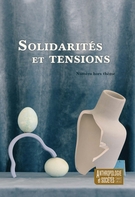FR :
Médiation et praxis dans un tableau d'Henri Matisse
Dans mon analyse détaillée de \aJeune femme au collier de perles (1942), je suggère une approche de la peinture qui la voit simultanément comme pratique, médiation (au sens de la dialectique marxiste) et conflit. Mon analyse, qui a pour but de mettre au jour les tensions qui sous-tendent l'apparente unité de l'œuvre, est à la fois formelle et idéologique dans la mesure où je partage avec M. Bakhtine, F. Gaillard et M. Fried une intuition et un postulat méthodologique anti-dualistes selon lesquels le rapport entre forme et idéologie n'est pas analogique (où la morphologie serait le signe indiciel d'un contenu référentiel pré-existant), mais homologique. Ceci suppose, pour citer Françoise Gaillard, "... la seule approche pertinente de l'idéologie en matière de texte, à savoir que le texte produit l'idéologie dont il relève ". Dans la Jeune femme au collier de perles, Matisse signifie un inachèvement qui porte la désémantisation de la figure au-delà d'une limite où le signe serait encore vu comme motivé par sa référence. J'assimile ainsi le tableau à une arène où viennent se croiser plusieurs discours, socialement motivés, sur la pratique picturale elle-même, discours que cette pratique informe et transforme.
EN :
Mediation and Praxis in one of Matisse's Paintings
In this detailed analysis of Jeune femme au collier de perles (1942), it is suggested that painting be approached simultaneously as practice, mediation (in the Marxist dialectical sense of the word) and conflict. The purpose of the analysis is to bring to light the tensions underlying the apparent unity of the work. The analysis is both formal and ideological inasmuch as the author shares with M. Bakhtine, F. Gaillard and M. Fried an intuition and a methodological postulate which are anti-dualistic, and according to which the relation between form and ideology is not analogical (if it was analogical, morphology would be the indicia! sign of a pre-existent referential content) but, rather, homological. This supposes, as Françoise Gaillard has stated, " ... the only pertinent approach to ideology with respect to texts, namely that a text produces the ideology by which it is simultaneously governed ". In Jeune femme au collier de perles, Matisse signifies an incompletion which takes the de-semantisa-tion of the figure beyond the point where a sign would still be seen as motivated by its reference. The painting is likened to an arena in which several socially-motivated discourses on pictural practice meet. The discourses are informed and transformed by this practice.




